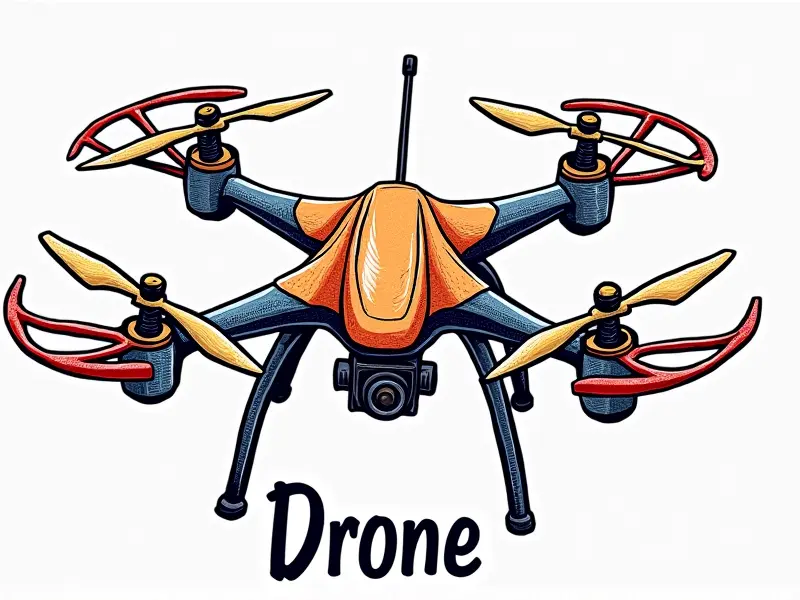What is a gimbal in drones?

Understanding Drone Gimbals: The Basics
A gimbal in drones is an essential component that stabilizes the camera or payload, ensuring smooth and steady footage even during flight. It consists of a series of rotating rings that allow for independent movement along multiple axes—typically pitch (up/down), roll (left/right), and yaw (rotation around the vertical axis).
Why Every Drone Needs a Gimbal
The primary reason every drone should have a gimbal is to maintain stability during flight. Without a gimbal, any movement of the drone would cause jarring movements in the camera footage, leading to shaky and unusable video or images.
Enhanced Camera Stability
- Smooth Video Footage: A gimbal ensures that your videos are smooth and professional-looking, even when flying over rough terrain or through turbulent air.
- Better Image Quality: By reducing camera shake, gimbals allow for sharper images with less blur, especially in low-light conditions.
How Drones Use Gimbals for Stability
Drones use gimbals to counteract the effects of external forces such as wind gusts and sudden movements. The gimbal's motors work in tandem with sensors to detect changes in orientation and adjust accordingly, maintaining a stable position relative to the horizon.
Advanced Control Systems
- Sensors: Gyroscopes and accelerometers within the gimbal detect movement and provide real-time data to the control system.
- Motors: High-precision motors adjust the position of the camera or payload based on sensor inputs, ensuring stability at all times.
What Does a Drone Gimbal Do?
A drone gimbal performs several critical functions to enhance the quality and usability of aerial footage. These include:
- Stabilization: The primary function is to stabilize the camera or payload, ensuring smooth operation regardless of external disturbances.
- Pan/Tilt Control: Allows for precise control over horizontal and vertical movements of the camera, enabling dynamic shots without moving the drone itself.
Mastering Drone Photography with Gimbals
To get the most out of your drone's gimbal, it’s essential to understand how to use its features effectively. Here are some tips:
- Practice Manual Control: Learn to manually control the gimbal for specific shots that require precise framing.
- Leverage Auto-Mode: Use auto-mode settings to let the gimbal handle stabilization while you focus on flying and composition.
Benefits of Using a Gimbal on Your Drone
The benefits of using a gimbal are numerous, making it an indispensable tool for drone enthusiasts and professionals alike:
- Improved Aerial Photography: Gimbals enable high-quality photos and videos that would be impossible to achieve without stabilization.
- Enhanced Cinematography: The ability to create smooth, professional-looking footage is invaluable for filmmakers and videographers.
Choosing the Right Drone Gimbal
Selecting the right gimbal depends on your specific needs. Consider factors such as payload capacity, weight, and intended use (photography, videography, or both).
- Payload Capacity: Ensure the gimbal can support the camera or other equipment you plan to carry.
- Battery Life: Opt for gimbals with efficient power management to extend flight times.
The Role of Gimbals in FPV Racing Drones
In first-person view (FPV) racing, stability is crucial but often secondary to speed and agility. However, a gimbal can still play a role by stabilizing the onboard camera for better visibility during races.
- Visibility: A stable camera provides clearer images to pilots using FPV goggles or screens.
- Safety: Improved visibility reduces the risk of collisions and enhances overall safety in high-speed racing scenarios.
Top Tips for Maintaining Your Drone's Gimbal
To ensure your gimbal performs optimally, follow these maintenance tips:
- Clean Regularly: Dust and debris can affect the performance of sensors and motors. Clean them regularly with a soft cloth.
- Lubricate Moving Parts: Apply a small amount of lubricant to moving parts to reduce friction and wear over time.
What Is a Drone Gimbal Explained?
A drone gimbal is a mechanical device designed to stabilize the camera or payload on a drone. It consists of multiple axes that allow for independent movement, ensuring smooth operation even in challenging conditions.
How Do Drone Gimbals Work?
Gimbals work by using sensors and motors to detect and counteract external forces such as wind gusts. The system continuously adjusts the position of the camera or payload to maintain stability relative to the horizon, providing smooth and steady footage.

